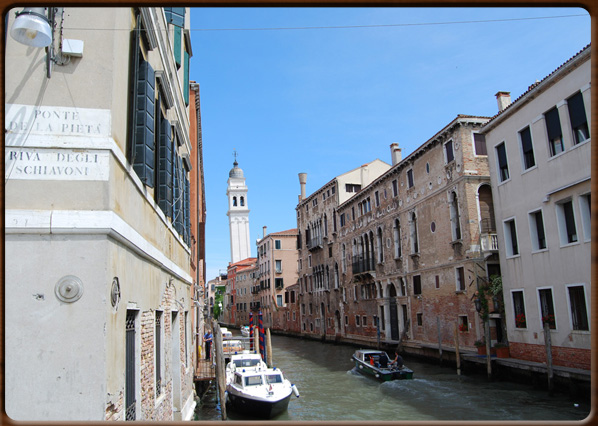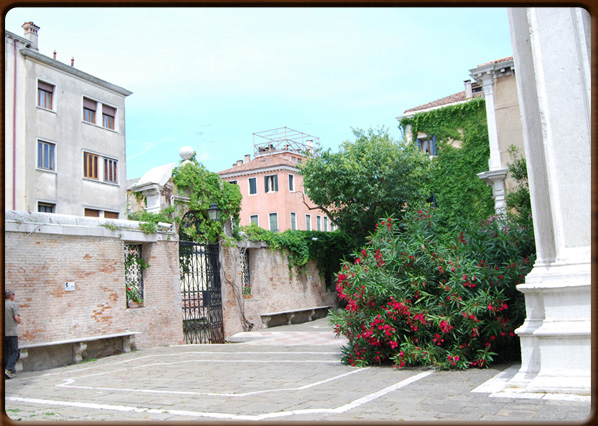
Rio dei Greci.

San Giorgio with tower bell on the Rio dei Greci.

Church gardens.



No video
By the mid 17th Century construction plans in the area where the Greeks settled (Castello) were completed. The leading architect of the day, Baldassarre Longhena, was called in to direct the building of the housing and various community facilities in 1658.
The houses were built behind the church of S. Giorgio dei Greci, between the Salizada dei Greci and Calle Bosello. The plan included a series of parallel multi-storey buildings divided by streets.
The distribution of architectural elements is reminiscent of the sixteenth-century model that had been adopted several times by Sansovino: apartments on different floors with separate entrances, crossing stairs ensured that these were independent units.
The centre of the district was the Greek Orthodox St. George’s Cathedral ("San Giorgio dei Greci"). Construction of the church began in 1539 to a design by Sante Lombardo and was completed in 1571. The Orthodox Greeks in Venice contributed to its construction: sailors, soldiers, mercenaries and intellectuals.
The exterior of San Giorgio dei Greci resembles a classic Venetian Renaissance Church, but inside is a basilica with a single nave and cupola. It contains many fine paintings by Greek painters from the 16th and 17th Centuries.
The "Campo dei Greci" sits near the church of San Giorgio dei Greci, flanked by the "Scuola di San Nicolò" and "Palazzo Flanghinis", built by Longhena in the middle of the 1600s. "Palazzo Flanghinis" houses the "Collegio Flanghinano", an ecclesiastical academy, now the seat of Hellenic Institute of Byzantine and Post-Byzantine Studies (founded in 1951).
Next to the Institute is a library with more than 2,000 books, mostly rare editions by Greek printers in Venice, and a museum in the Scuola di San Nicolò dei Greci, which is unique in Europe for its rich collection of Byzantine icons.
1500 - - rev. 0.1.6